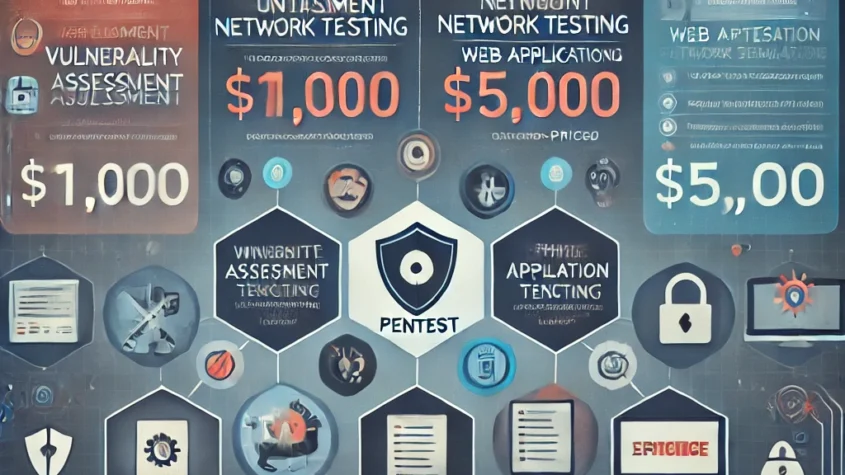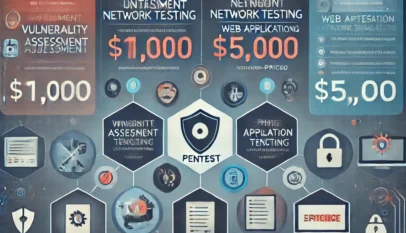
Penetration testing is a crucial component of a comprehensive cybersecurity strategy, helping organizations identify and address vulnerabilities before they can be exploited. The pricing for penetration testing services can vary widely, typically ranging from $4,000 to over $100,000, depending on factors such as the scope, complexity, and specific requirements of the engagement.
Businesses must consider not just the cost but the value these tests bring in terms of risk management and compliance. Various pricing models exist, including fixed-price contracts, hourly rates, and project-based agreements, each serving different needs and budget constraints.
Understanding the factors that influence penetration testing pricing can empower organizations to make informed decisions and invest wisely in their cybersecurity efforts. The importance of selecting the right service provider cannot be overstated, as the quality of the assessment has a direct impact on overall security posture.
Understanding Penetration Testing Pricing
Penetration testing pricing can vary widely based on several factors, including the type of test conducted and the specific needs of the organization. Understanding these aspects can help companies budget more effectively for cybersecurity assessments.
Types of Penetration Tests
There are several types of penetration tests, each with distinct objectives. Common types include:
- Network Penetration Testing: Targets internal and external networks to uncover vulnerabilities. Prices often range from $4,000 to $15,000.
- Web Application Penetration Testing: Focuses on identifying weaknesses in web applications. Costs can vary from $3,000 to $10,000, depending on application complexity.
- Mobile Application Testing: Examines mobile apps for security flaws. Pricing usually falls between $3,000 and $8,000.
- Social Engineering: Simulates tactics to deceive employees and exploit human factors. This can be less predictable but generally starts around $2,500.
Each type serves specific needs, impacting overall pricing.
Factors Influencing Costs
Several factors affect penetration testing costs. They include:
- Scope of Work: Larger projects with more assets or applications typically incur higher costs.
- Testing Depth: A full-scope test may cost more than a limited engagement, as it requires a broader analysis.
- Experience Level of the Firm: More experienced firms may charge premium rates due to their expertise and reliable results.
- Location: Regional differences can influence pricing. Companies in urban areas may charge more than those in rural locations.
Understanding these factors helps organizations better estimate their testing expenses.
Pricing Models
Penetration testing firms use various pricing models, including:
- Fixed Pricing: A set fee for a defined scope. This model provides budgeting clarity.
- Hourly Rates: Billing based on the number of hours worked. This approach can lead to higher costs if the scope expands.
- Value-based Pricing: Costs align with the value delivered, often used for more complex engagements.
Each model has its advantages and drawbacks, which organizations should consider based on their specific needs and circumstances.
Strategies for Budgeting and Reducing Costs
Effective budgeting for penetration testing can significantly lower costs without compromising on security. Two key strategies include long-term contracts and customized testing scopes.
Long-Term Contracts and Packages
Engaging in long-term contracts can yield considerable savings. Many providers offer discounts for commitments that span multiple assessments. Organizations can negotiate a fixed price for annual or semi-annual testing, which can help in planning budgets more effectively.
Creating a package can simplify procurement. By bundling services like vulnerability assessments and social engineering tests, clients may reduce per-test costs. Regularly scheduled tests can also lead to improved security posture due to continuous monitoring.
Customized Testing Scopes
Tailoring the scope of penetration tests can directly impact pricing. Organizations should identify and prioritize their most critical assets—this ensures that tests focus on areas with the highest risk. By avoiding unnecessary tests, resources can be better allocated.
Providers may offer flexible options that adjust the depth of testing to fit budget constraints. For instance, a basic assessment might cover essential vulnerabilities, while a more in-depth analysis can be scheduled based on risk evaluations. This targeted approach allows companies to optimize spending while maintaining security standards.
Standing Desk Canada: The Ultimate Guide to Your Workspace Upgrade
Standing desks have gained significant popularity in Canada as more individuals look to im…









